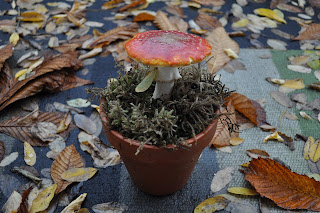I really like burning candles, especially in the winter. Due to concerns about inside air quality, I mostly burn beeswax candles, which don't emit the nasty fumes paraffin does.
Beeswax is expensive, and it should be, it takes bees approximately 2 million flowers to make one pound of honey, and in a typical hive the bees produce only 1 pound of wax per 10 pounds of honey. Therefore, the wax is the product of 20 million flower visits, and it has been estimated that "bees collectively fly 150, 000 miles, roughly six times around the earth, to yield one pound of beeswax." According to Wikipedia the whole globe only produces about 10 000 tons annually.
That is a lot of concentrated energy, and therefore I feel pulled to honour it, and extract all I can out of any wax I have. This is my first attempt at turning old candles into new candles.
I've collected all the candle ends and drippings over the last little while.
I bought a little stovetop wax melting pot, it was cheap and I adore its long handle, but any pot with a spout would work, just understand that the wax will never fully come off, and so don't use your favourite sauce pan.
On the stove at a low-med heat, keep adding the wax pieces in as they melt and condense,
I used a chopstick to stir until all the wax was melted.
Then the wax was poured through a cloth to filter out any wicks, dirt and charcoal. At this point I spilled some on my burner, and my brilliant friend suggested that next time I should wrap the whole burner with foil, for easy clean up. A great idea!
I might also try a looser weave cloth for a faster filter.
After filtering, cleaning out the pot and putting the wax back in the pot (I could have a better system here) I poured the wax into these old tea and spice tins,
I dropped store bought wicks into them, I kept the wicks straight by clipping bobbypins to the bottom.
And let them cool and harden. They cracked, I guess because the wax, which shrinks when it cools, was too hot when I poured it. These candles are not gift quality, but I'm still so happy with them.
Hmmm, a few more candlelight evenings in my future.





























